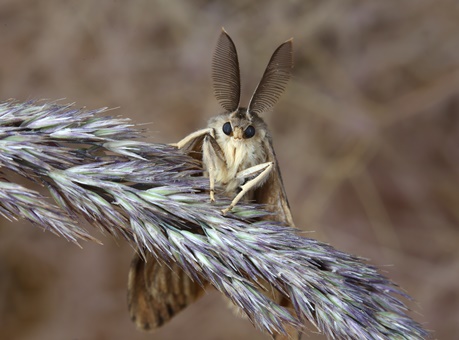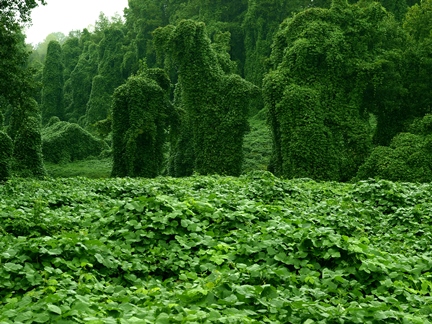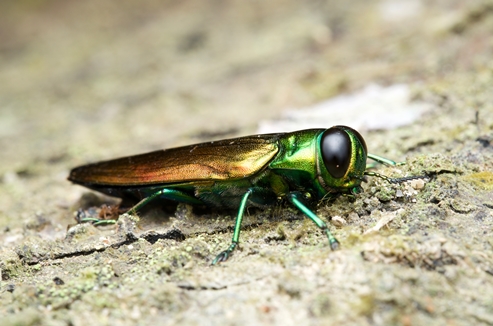Engage students in STEM (science, technology, engineering, and math) as they learn about invasive species. The suggestions below, suitable for middle and high school students, are enrichments for Project Learning Tree’s Invasive Species activity from the PreK-8 Environmental Education Activity Guide, and Forest Invaders found in PLT’s Focus on Forests secondary module. Be sure to check out the full lessons!



Getting Started: Help students develop their knowledge about invasive species and the negative impact they can have on our environments by showing the Invasive Species: The Basics video. You can also have students explore the Invasive and Exotic Species of North America website to learn more about the invasive plants, insects, pathogens and other species found here in the United States.
Essential Question(s): What invasive species are found in your state, and what can you do to help increase the awareness of invasive species issues?
Task: Have students select an invasive species found in their state that is considered a “State Specific Threat.” After selecting a species, guide students to design and create a multimedia educational outreach product (video, poster, PowerPoint, etc.) that will increase public awareness about the species they selected. Organize a Student Research Symposium and have students present their products to classmates, parents, and community groups.
NGSS Connections:
Middle School
- Next Generation Science Standard: MS-LS2-2. Construct an explanation that predicts patterns of interactions among organisms across multiple ecosystems.
- Next Generation Science Standard: MS-LS2-5. Evaluate competing design solutions for maintaining biodiversity and ecosystem services.
High School
- Next Generation Science Standard: HS-LS2-7. Design, evaluate, and refine a solution for reducing the impacts of human activities on the environment and biodiversity.
STEM Strategies
Science
To build their foundational knowledge about invasive species, have students read Frequently Asked Questions about Invasive Species. Next have students find three or more credible sources (journal articles, fact sheets, technical publications) about their invasive species from the USDA National Agricultural Library. They should record notes about their selected invasive species on the following:
- Biology
- Impacts on ecosystems and biodiversity
- Detection
- Monitoring and control
- Prevention
- Policy/Regulations
Technology
Learning can be fun and games. Use this lesson plan and the free online activity created by the MacArthur Foundation to build new knowledge about invasive species. After completing the lesson, have students discover and collect information that describes how to identify, control, and prevent the spread of the invasive species they selected. Using the information collected during the “Science” session, ask students to create and present a multimedia educational outreach product (video, poster, PowerPoint, etc.)
Engineering
Working in small teams, have students design and create their own “invasive species” board game. The purpose of the game must be to educate players about the biology, impact on ecosystems and biodiversity, control, prevention, policy, and identification of invasive species. The new game can be created from students’ imagination or it can be modeled after any popular board game the student team likes to play. View these examples of games other students have created, and this “Race to Displace!” board game, for some ideas. Students must write the rules and instructions for the game, and test their game to determine if it “works.”
Math
Collect data as part of the pilot testing of the board game created during the “Engineering” session. Analyzing data and interpreting the results is a valuable skill that is used to make decisions. For example, collect the number of times (i.e., frequency) players provide a correct or incorrect answer when required to demonstrate their knowledge, or make a correct and incorrect move after reading the rules and instructions. Frequency is expressed as a percentage of the total possible results.
EXAMPLE:
A board game is constructed that tests/requires specific knowledge (facts, identification, etc.) about invasive species. The game has a total of 100 possible answers (i.e., state a fact, identify a photo, describe the control method(s), etc.). During the pilot test, the game creators determined that players were able to correctly answer 90 percent of the questions. These results indicate that players possessed significant knowledge of invasive species. The game creators can now make a decision whether or not to change the questions to increase the level of difficulty for the players. After all, the purpose of the game is to increase knowledge about invasive species, but the results indicate the current design may not be difficult enough.
If the game creators conduct a second pilot test with players from another class or grade level, they can then compare the frequencies between the two groups to evaluate the game’s design.
Additional Resources
Don’t have PLT’s PreK-8 Environmental Education Activity Guide?
- Purchase a print guide or e-book, available from PLT.org, Amazon and other places where books are sold.
- Get it through your PLT State Coordinator along with hands-on professional development, alignments to state standards and other state-specific supporting resources.
Don’t consider yourself a formal teacher?
- Check out PLT’s Invasive Species family activity. We have 40+ nature activities for families that can be easily used by parents, grandparents, youth group leaders, nature centers, and other nonformal programs.
* Note: PLT has been encouraged by our partners at North Carolina State University to follow the Entomological Society of America’s recommendations to refer to these invasive species as their scientific name, Lymantria dispar. For more details, visit NC State Extension Forestry and the Better Common Names Project.



2 comments on “STEM: Invasive Species”
Why STEM and not STEAM?
PLT itself represents interdisciplinary education. To PLT, STEM is a way of teaching that incorporates both soft and hard skills that extends the four discipline areas. We emphasize STEM in the Branch because STEAM is evident throughout our resources, not to mention STREAM and EE-STEM, among others. Here is a great article from NSTA that outlines “Defining STEM” and its complexities: https://www.nsta.org/publications/news/story.aspx?id=59305